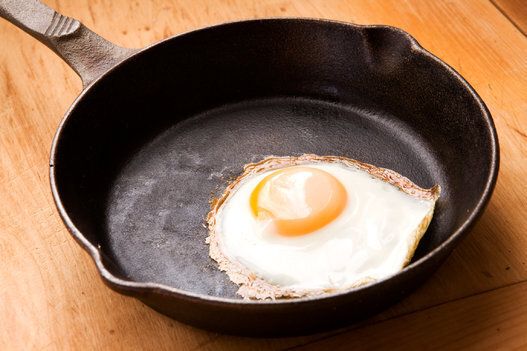
Lauded for its beauty and ability to conduct heat evenly, copper cookware is the tool of choice for serious chefs. The downside: The rosy-colored metal darkens with age and requires regular maintenance to stay shiny. But restoring the like-new luster and shine is not as difficult as you might expect, according to copper-cleaning experts. Here’s how to do it.
What Not to Do
Tara Steffan, marketing manager at Mauviel, the French copper cookware manufacturer established in 1830, says you should avoid putting copper in the dishwasher because harsh detergents don’t treat the metal kindly. The company also warns against using cleaners that contain bleach because it can be corrosive and cause the cookware to pit, resulting in a scarred, pockmarked surface.
Pretty on the Inside
Although it’s possible to maintain copper’s like-new appearance with regular cleaning, some cooks appreciate the warm, darkened glow of a finish with more patina.
Regardless of your preference, unlined copper pots — meaning those not lined on the inside with a different metal — should always be kept shiny. If a patina, also called verdigris, is allowed to darken the inside of a copper pan, it can be transferred onto food. Cleaning the inside of unlined copper is essential.
Mauviel suggests doing the following: To remove any verdigris on an unlined pan, use a vinegar-salt solution or rub the metal with lemon sprinkled with salt. Rinse and dry the pan.
Handle It
For cleaning iron handles that may show signs of rust, scrub (the handle only!) with a piece of light-gauge steel wool, then rub it lightly with oil.
Copper Cleaning Cream
Copperbrill is a cleaning paste for copper surfaces. Mauviel and de Buyer are two popular brands. How often you use the paste depends on the look desired. To maintain a shiny surface, clean after every use; to create a nice patina, you need to clean with the paste only occasionally.
Here’s how to use the paste:
- First, rinse the pan thoroughly.
- Then, using a soft sponge or cloth, rub a small amount of the paste all over the copper surface.
- Next, wash the pan under a running faucet.
- Dry the pan.
Other products to check out include: Wright’s Copper (Brown) Cream Polish; Twinkle Brass & Copper Cleaning Kit; and Hagerty Heavy Duty Copper, Brass & Metal Polish.
Cleaning Alternatives
Marie Stegner, consumer health advocate for the Maid Brigade, a green homekeeping company based in Atlanta, says there are alternative ways to clean copper.
One of her favorites is to mix kosher salt with lemon juice in a small bowl to make a paste. “I always use the kosher salt because it has bigger crystals,” she says. “Then you just have to scrub it and rinse.”
Stegner is also a fan of cleaning copper with ketchup. Hold the fries. “It’s kind of funny, but it works,” she says. “Put a dab of ketchup on the [copper pan] and rub it in a circular motion with a microfiber cloth. It cleans right away.”
If you’re hesitant to give this home remedy a try, Stegner suggests you try it on a penny first.
The Maid Brigade has other natural solutions for cleaning copper as well:
- Lemon juice and baking soda: Combine a few tablespoons of lemon juice with 1 tablespoon of baking soda and rub the mixture on the copper until the grime begins to come off. Then polish with a clean cloth.
- Vinegar and salt: Pour vinegar and salt over the copper. Rub in and keep rubbing until the tarnish comes off. Rinse and polish with a clean, dry cloth.
- To enhance the natural polish of copper, Stegner suggests wiping it with a dab of vegetable oil.
More from Houzz.com
Also on HuffPost
